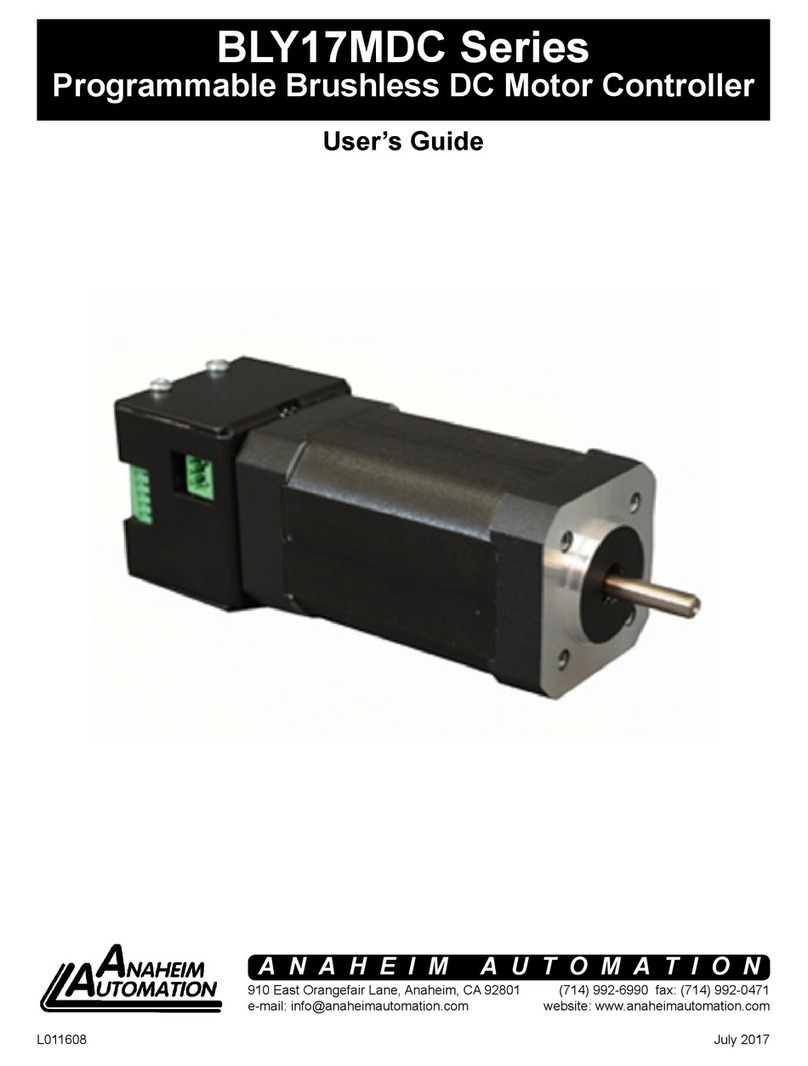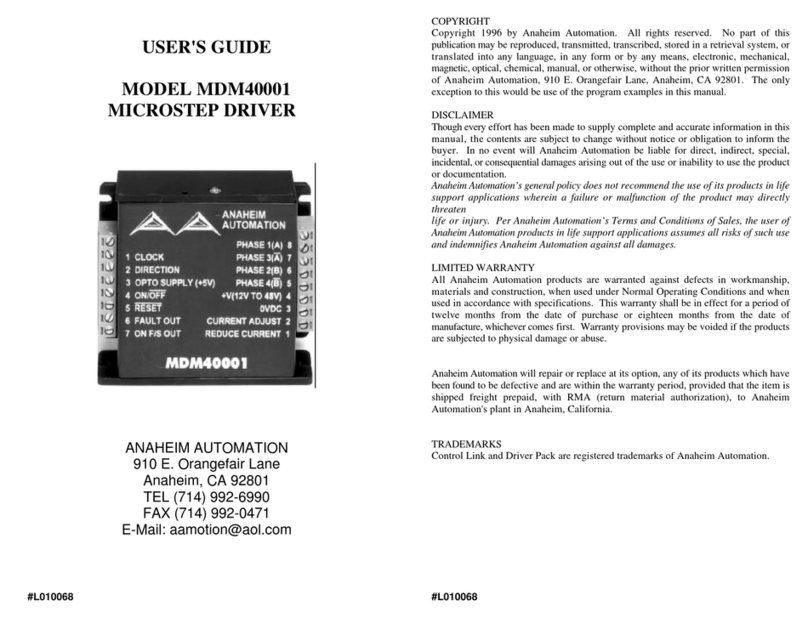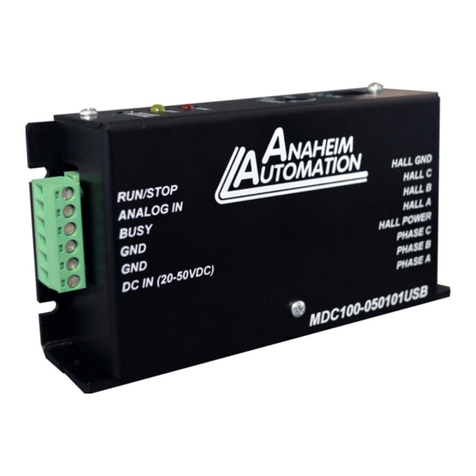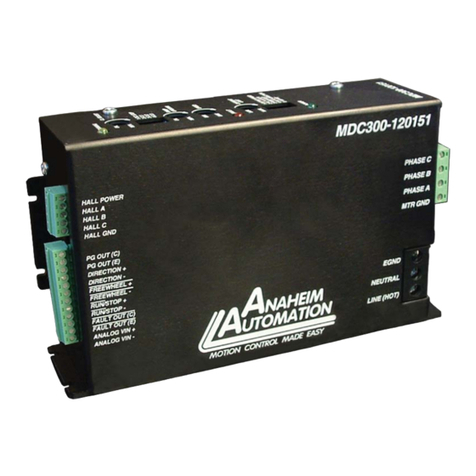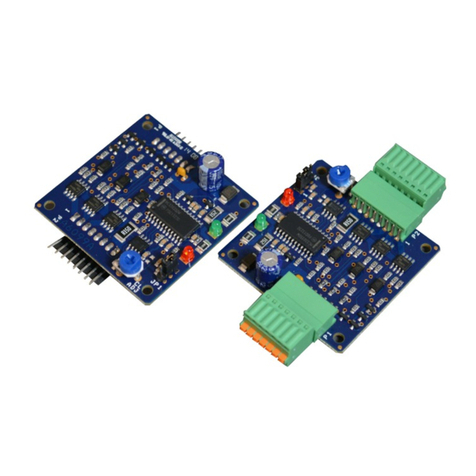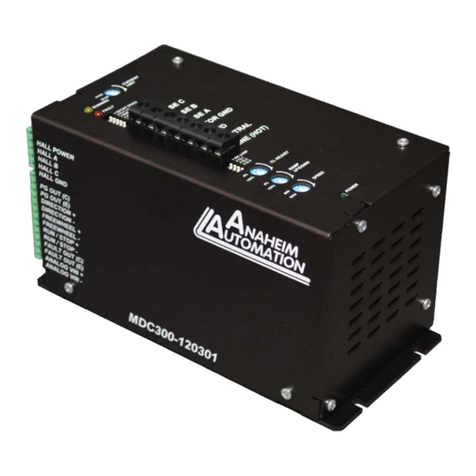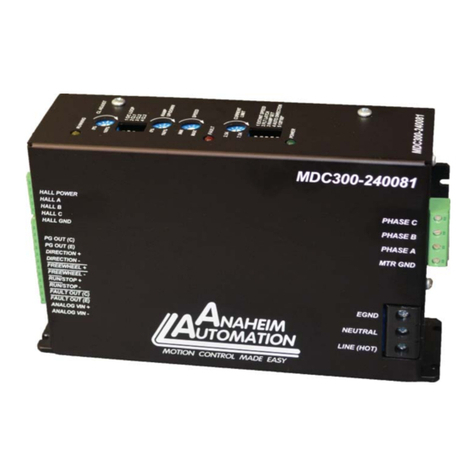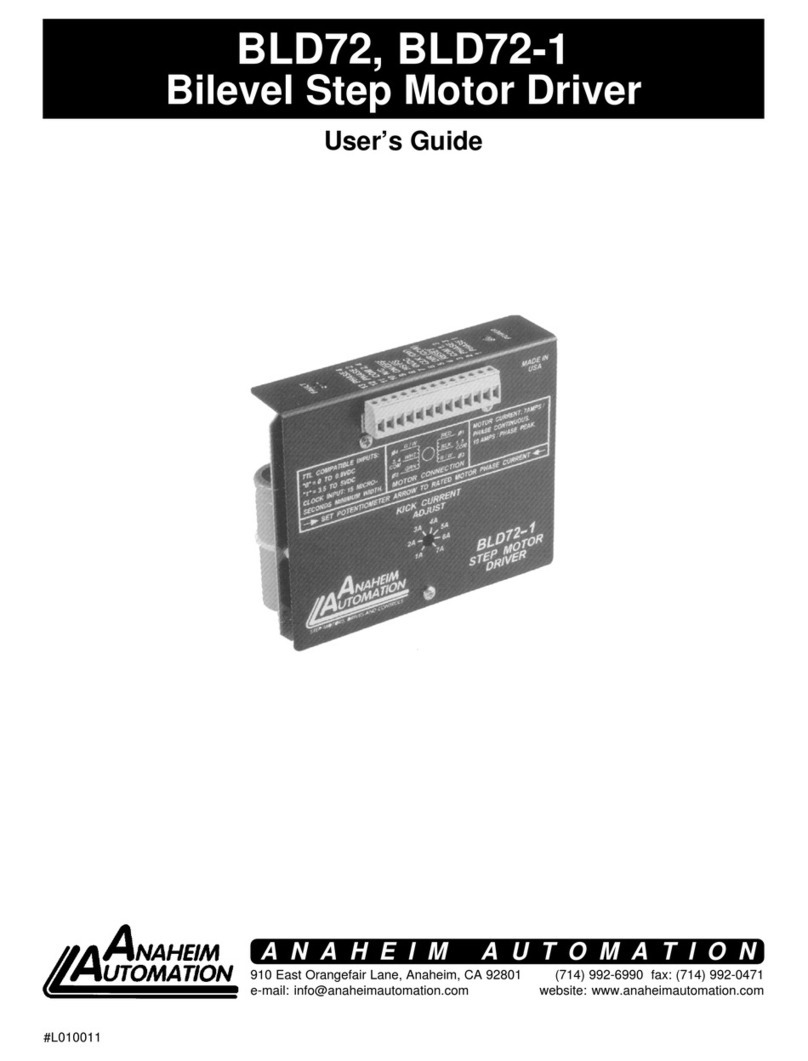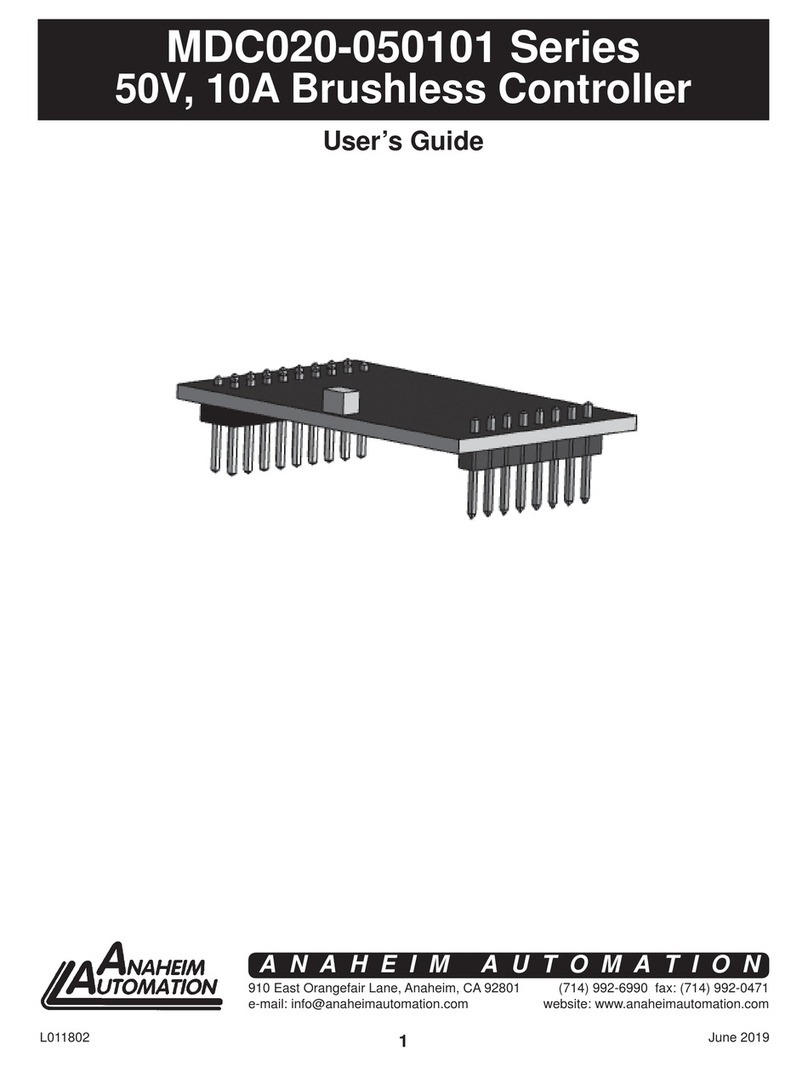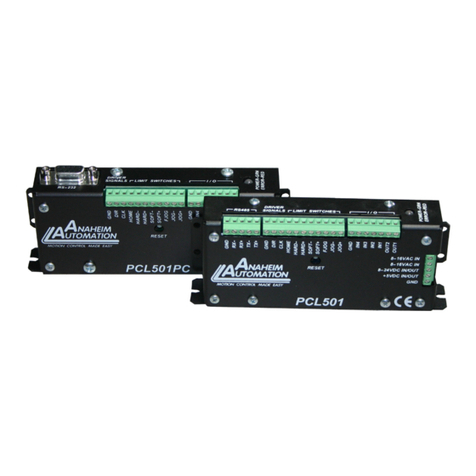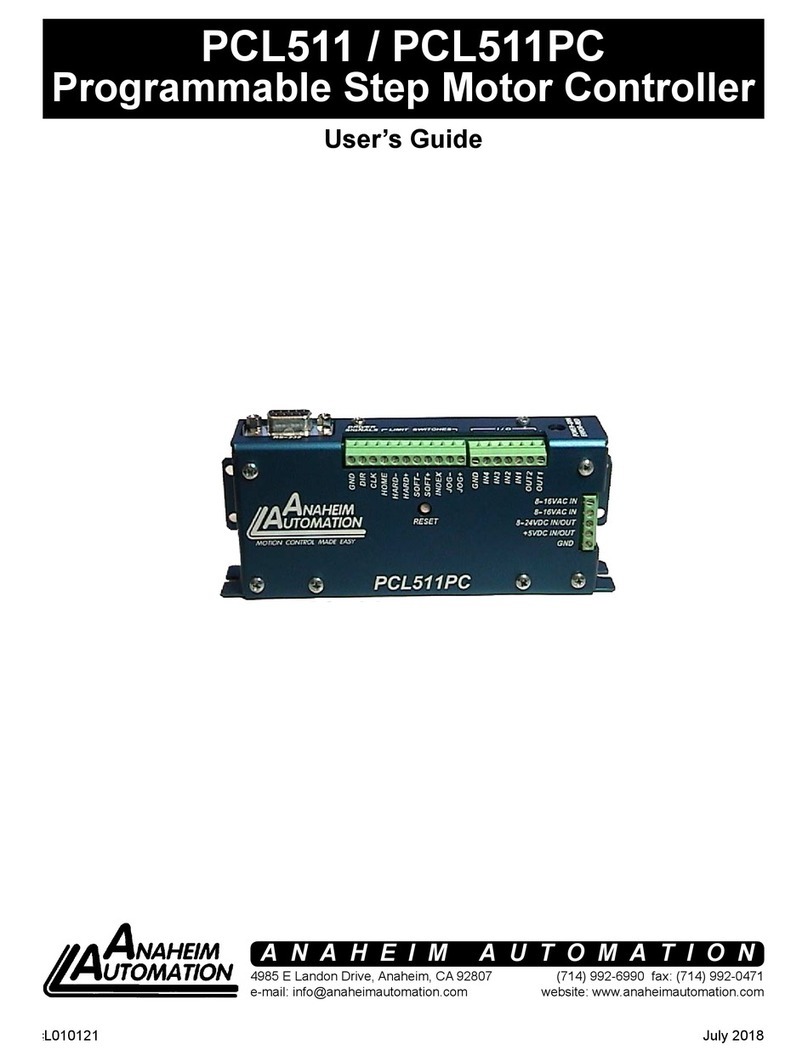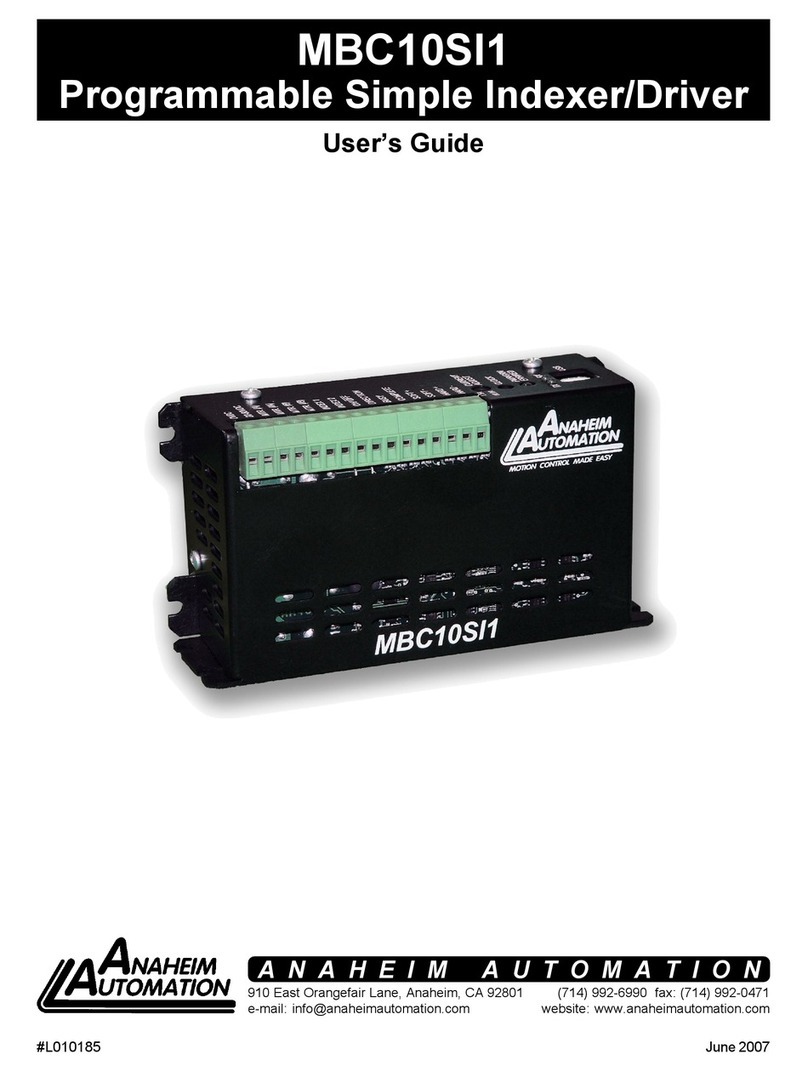
September 2012L010194 2
Table of Contents
Section 1: Introduction.................................................................................................................................3
Description.....................................................................................................................................................3
Ordering Information.......................................................................................................................................4
Axis Selection.............................................................................................................................................4
Baud Selection............................................................................................................................................5
Baud Rates.................................................................................................................................................5
Methods of Communication.......................................................................................................................5
RS232 to RS485 Protocol...........................................................................................................................5
RS485.........................................................................................................................................................6
Two Wire Conguration..................................................................................................................................6
Four Wire Conguration...............................................................................................................................6
Terminating Resistor......................................................................................................................................7
Status LED (Controller)...................................................................................................................................7
Technical Support...........................................................................................................................................7
Electrical Specications..............................................................................................................................8
Terminal Descriptions.................................................................................................................................8
Dimensions.................................................................................................................................................9
Wiring Diagram............................................................................................................................................9
Motor Selection..........................................................................................................................................10
Step Motor Selection Guide.......................................................................................................................11
Reducing Output Current............................................................................................................................11
Determining Output Current...........................................................................................................................11
Step Motor Congurations.........................................................................................................................12
Connecting the Step Motor........................................................................................................................13
Short-Circuit, Mis-Wire, and Over-Current Conditions...................................................................................13
Section 2: Controller Functions................................................................................................................14
Section 3: SMC50WIN Software...............................................................................................................17
Installation.................................................................................................................................................17
Getting Started...........................................................................................................................................17
“The Unit is Connected” / “The Unit is NOT Connected”....................................................................................18
File Menu..................................................................................................................................................18
Setup Menu...............................................................................................................................................18
Toolbar........................................................................................................................................................18
Tab Sheets................................................................................................................................................19
Current Program Filename.............................................................................................................................21
Add/Change/Insert Commands..................................................................................................................21
Calculator..................................................................................................................................................25
Section 4: Direct Talk Mode..................................................................................................................26
COM Port Settings....................................................................................................................................26
Unit Selection...........................................................................................................................................26
Instructions...............................................................................................................................................26
Section 5: Troubleshooting....................................................................................................................31
Error Codes..................................................................................................................................................32
Section 6: Tutorial...................................................................................................................................33
Sample Program 1:......................................................................................................................................33
Sample Program 2:......................................................................................................................................34
Appendix 1: ASCII Table for Direct Mode.....................................................................................................36
Copyright ..................................................................................................................................................37
July 2018
